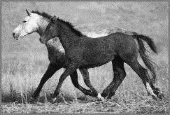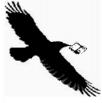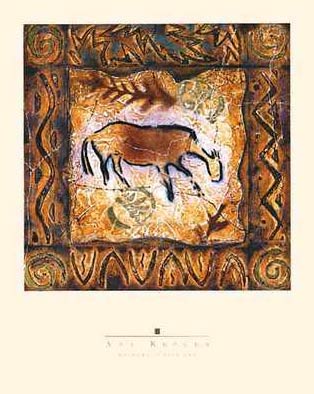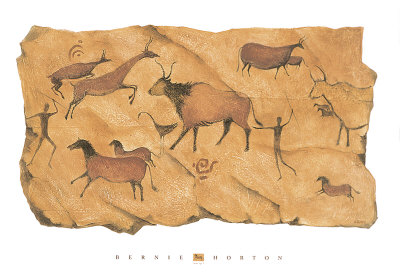|
Crow
Country Curly Horses |
 |
Crow Country Curly Horses descend from the oldest documented bloodline
(breed) of North American Curly Horses.
It seemed fitting that I document as much of their past history as I could
compile on one webpage. Enjoy...
Donna Grace Vickery, Montana
the images contained herein are absolutely not allowed to be copied or
used w/o permission from publisher
The following text (in black) & ledger drawings are found in the book: |
Spirit
Beings and Sun Dancers
Black Hawk's Vision of the Lakota World
INDIAN PICTURES
DRAWN BY BLACK HAWK
CHIEF MEDICINE MAN
OF THE SIOUX
by
Janet Catherine Berlo
© 2000 by George Braziller, publisher
Second Printing, May 2001
in association with
The New York State Historical Association
Plains
Indian Winter Counts
Curly
Horses in the Battle of the Little Bighorn
General
George Cook, an Army Officer, stated that the Sioux
Rod,
Blue Thunder winter count; Shan Thomas, Myth & Mystery
High Dog winter count; Shan Thomas, Myth & Mystery
|

2013 - updates & added notes
(Gordon Plain Bull colt Summer 2002 © Sorrel.de) |
| 2017 Update: Please email us at heritage.horse.assn@gmail.com if you know about any Berndt or "pure" Bad Warrior horses (or Aishihik line) left alive out there. Email me for more information about possible Bad Warrior Horse Preservation Projects to save this rare line of horses before they are gone. |
Additional
Reading
| The Aboriginal North American Horse (pdf) Traditional Dakota/Lakota people firmly believe that the aboriginal North American horse did not become extinct after the last Ice Age, and that it was part of their pre-contact culture. Dakota/Lakota Elders as well as many other Indian nations contend that according to their oral history, the North American horse survived the Ice Age, and that they had developed a horse culture long before the arrival of Europeans, and, furthermore, that these same distinct ponys (sic) continued to thrive on the prairies until the latter part of the XIXth (19th) century, when the U.S. government ordered them rounded up and destroyed to prevent Indians from leaving the newly-created reservations. Although there is extensive evidence of this massive slaughter, no definitive evidence has yet been found to substantiate the Elders' other claim, but there are a number of arguments in favour of the Indian position. |
| INDIGENOUS
HORSES by Daniel M. Johnson "And it came to pass that we did find upon the land of promise, as we journeyed in the wilderness, that there were beasts in the forests of every kind, both the cow and the ox, and the ass and the horse, and the goat and the wild goat…” (1 Nephi 18:25) With these few words, Nephi ignites a long-running modern controversy. The mere mention of horses in Ancient America has made the Book of Mormon a target for critics over the years. After all, everyone knows that horses were introduced to the Americas by the Spanish, right? |
| Horse
Bones that Date 50 Years Prior to the Spanish By Meridian Magazine · September 3, 2013 (The question of horses in America is always an intriguing one for Latter-day Saints, because the Book of Mormon specifically mentions horses) In July 2013, archaeologists in Carlsbad, New Mexico, unearthed a nearly intact skeleton of a horse that apparently lived and died 50 some years before the Spanish conquered California. This followed the discovery of skeletal remains of another horse and a burro, in June. |
Dr. Raymond Hurst · September 3, 2013: "The Western Center Museum in Hemet, CA has horse fossils discovered during the excavation of the Diamond Valley reservoir. They date to long before the Spanish arrived." |
| Columbus discovered America in 1492 and proved that the world was round, right? |
 |
| Indian
Horses before Columbus
by Gunnar
Thompson, Ph.D. Several powerful movements combined to crush and stifle claims that ancestors of the Plains Indians had horses and “horse culture” for thousands of years. Whereas the “Founding Fathers” of America had promoted isolation, neutrality, and non-interference in foreign affairs, the New Senate that ran American politics in the 1800's believed that the opposite strategy was preferable, for power and profit. The US Senate worked to reeducate the American public with a new hero -- Columbus. He embodied the qualities and vision of an empire-builder. Indians and their “Reservations” had to go. The Columbian Exposition (1892-93) had an enormous impact. More than 26 million people viewed the exhibits. Spinoff public media and educational programs impacted practically everyone else in the Country (or about 150 million people). These programs were endorsed by two Presidents -- Harrison and Cleveland. Almost everyone adopted this revised “history.” In 1992, the US Government sponsored the Columbus “Quincentennial Celebration.” New festivities featured a yearlong exhibit at the National Museum, the Smithsonian Institution. Called “The Seeds of Change,” the National Exhibit praised Columbus for uniting two previously isolated hemispheres and for bringing horses, maize, potatoes, and sugarcane across the Atlantic Ocean. A vast majority of university professors and public teachers participated in spreading this propaganda for the simple reason that: 1) they believed it was true; and 2) their jobs were closely tied to supporting the traditional educational and governmental agendas. But now, read the rest of the story... |
| Horse remains found near Dawson City are 26,000 years old. WHITEHORSE, Yukon Territory - Carbon-dating on the remains of a horse found fall 1992 near the Alaskan-Canadian border show it died 26,000 years ago, experts say, making it one of the best-preserved Ice Age animals ever discovered in North America. The dark chestnut hide is complete with blond mane and tail. [I think of this as a primitive chestnut color, which many of the Berndt horses were.] Also recovered were a right foreleg with the flesh remaining, a couple of bones and stomach contents. Miners found the horse near Dawson City, 340 miles north of Whitehorse. photo of the Yukon horse |
| Horse Remains are 26,000 Years Old and More on the Yukon Horse |
| Ancient Yukon horse yields oldest genome ever (By Emily Chung, CBC News, 06.26.13) A 700,000-year-old horse bone found in the permafrost of a Yukon gold mine has yielded a complete genetic profile, breaking scientific records and revealing many new insights about the evolution of horses. Duane Froese, an earth sciences professor at the University of Alberta, found the metapodial bone from the horse's leg, equivalent to bones found in the palm of a human hand, in 2003, in the Thistle Creek gold mine, about 100 kilometres south of Dawson City. Most of the horse fossils found by Duane Froese and his team have been from the Late Pleistocene, when Arctic horses were pony-sized. "It's not uncommon to find bones in the region from pony-sized horses from within the last 100,000 years," Froese said in a phone interview Wednesday. "But this particular metapodial bone was distinctive because it was so much larger. This was really domestic horse sized," said Froese. |
| 700,000-Year-Old Horse Genome Shatters Record for Sequencing of Ancient DNA (wired.com, by Joe Hanson, 06.26.13) By piecing together the genetic information locked inside a frozen, fossilized bone, scientists have deciphered the complete genome of an extinct prehistoric horse that roamed the Yukon more than 700,000 years ago. The work rewrites the evolutionary history of the horse and smashes the previous record for the oldest complete genome ever sequenced. Horses were once considered a textbook example for the smooth transition of one species into another, a perfect illustration of Darwin’s theories. Ancient equine species — dog-sized animals with five toes – gradually evolved into towering, hooved thoroughbreds. Or so the story goes. But with every fossil that is unearthed, a more tangled picture emerges. |
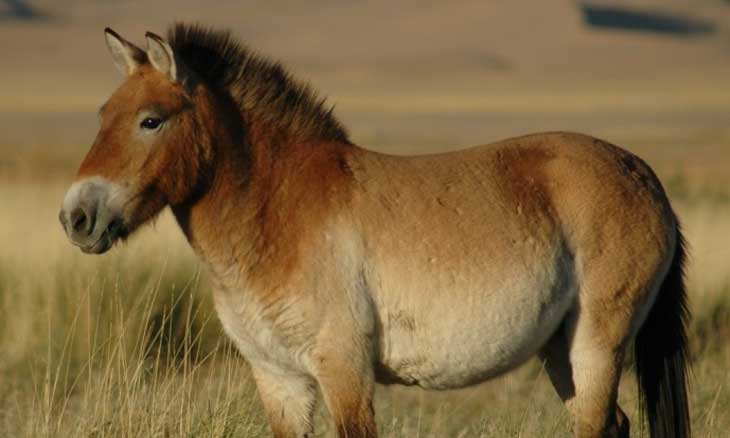 |
| 700,000-Year-Old Horse Found in Yukon Permafrost Yields Oldest DNA Ever Decoded • Posted on November 19, 2013 • Western Digs • Updated March 3, 2017—by Blake de Pastino. |
| Recalibrating Equus Evolution using the genome sequence of an early Middle Pleistocene horse. 2013 Jul 4; 499(7456):74-8. doi: 10.1038/nature12323. Epub 2013 Jun 26. Our analyses suggest that the Equus lineage giving rise to all contemporary horses, zebras and donkeys originated 4.0-4.5 million years before present (Myr BP), twice the conventionally accepted time to the most recent common ancestor of the genus Equus. We also find that horse population size fluctuated multiple times over the past 2 Myr, particularly during periods of severe climatic changes. |
| CurlyHorses.com | email
Donna G Vickery |
| BuckingV.com |

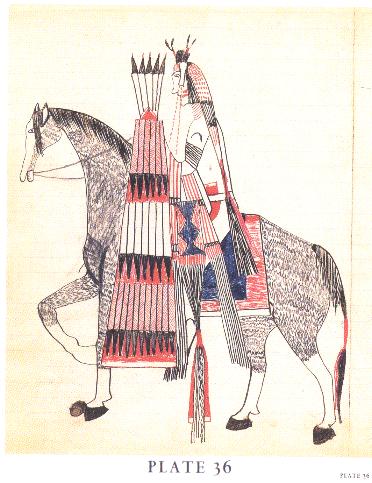
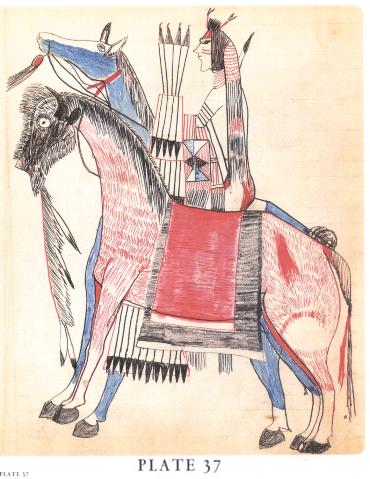
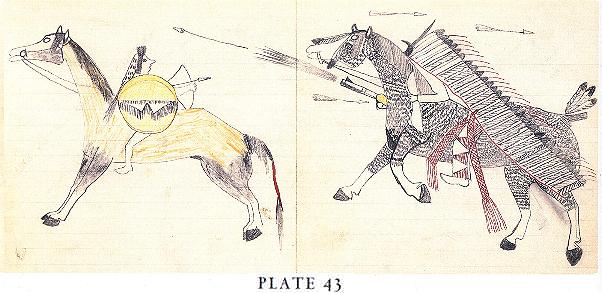
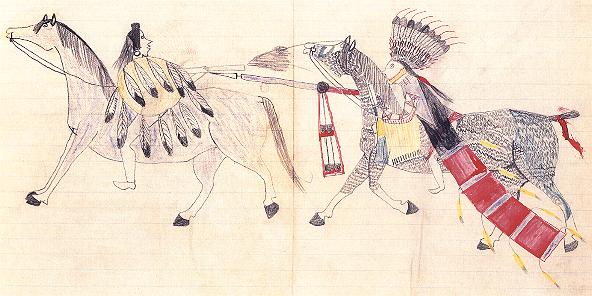




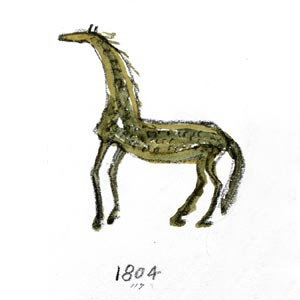


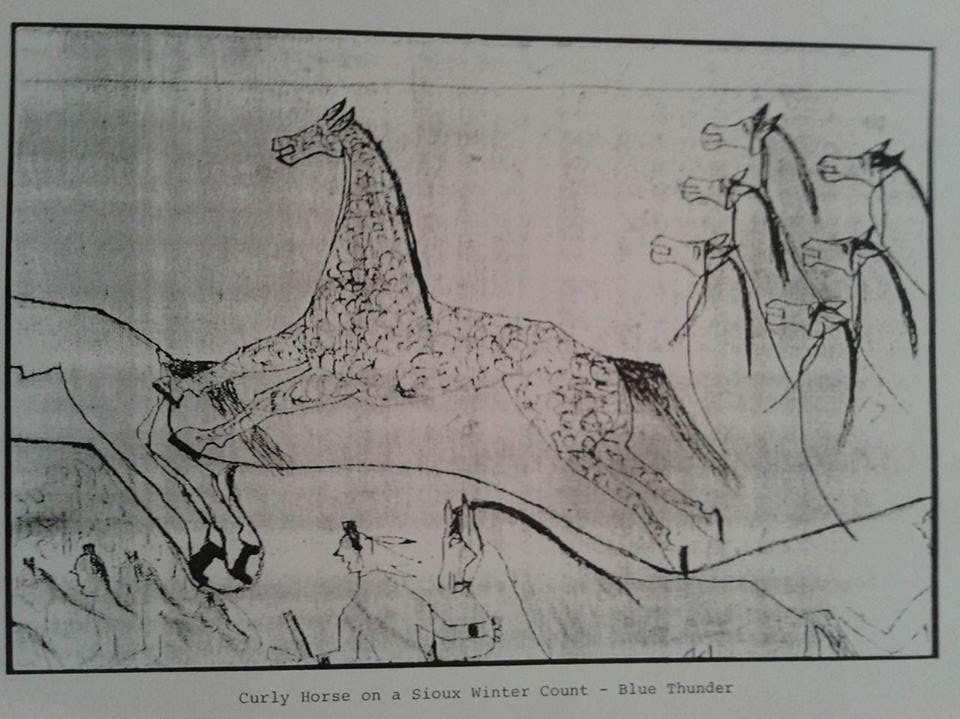
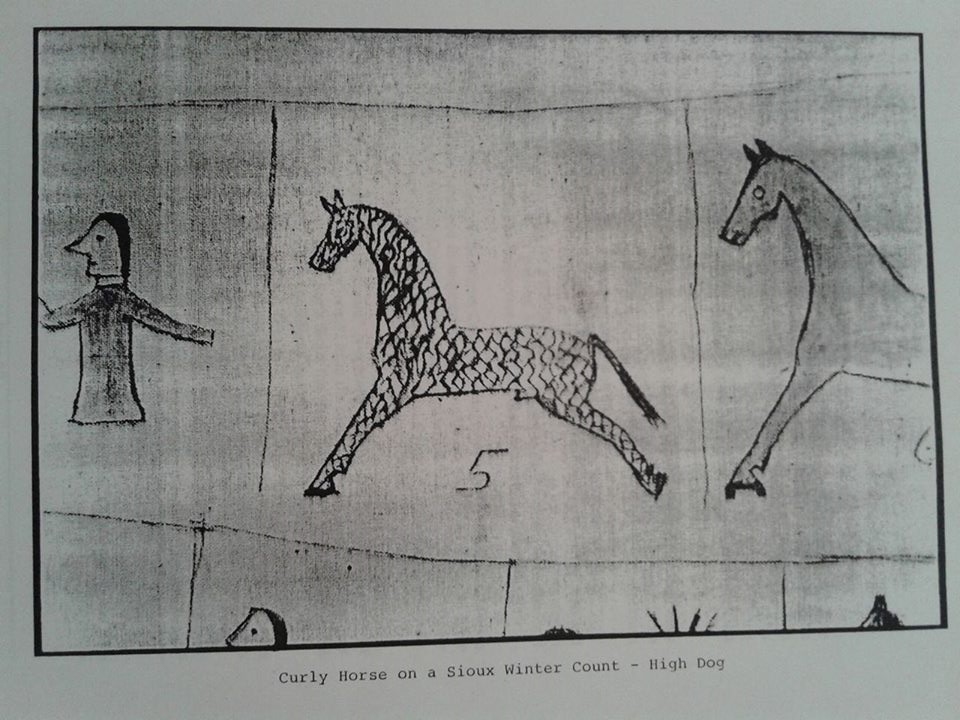
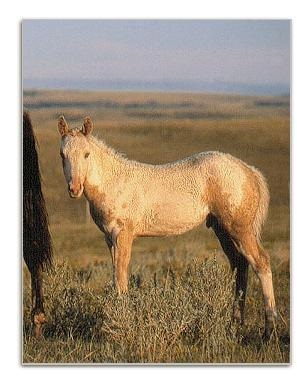 Crow Country Curly Horses (my old breeding operation), according
to the last wishes of Ernest Hammrich, steadily returned Warrior-bred
Curly Horses back to the Crow people in Montana during the 1990's
and 2000's. Since then I have lost track of who has them any more,
but I hope a few of them still exist down there.
Crow Country Curly Horses (my old breeding operation), according
to the last wishes of Ernest Hammrich, steadily returned Warrior-bred
Curly Horses back to the Crow people in Montana during the 1990's
and 2000's. Since then I have lost track of who has them any more,
but I hope a few of them still exist down there.